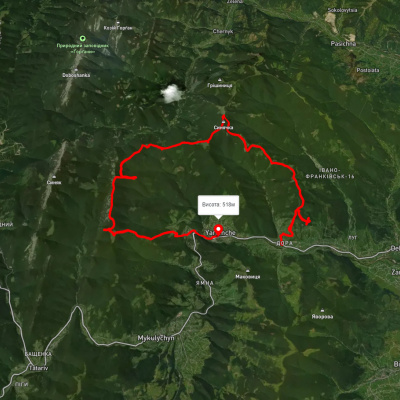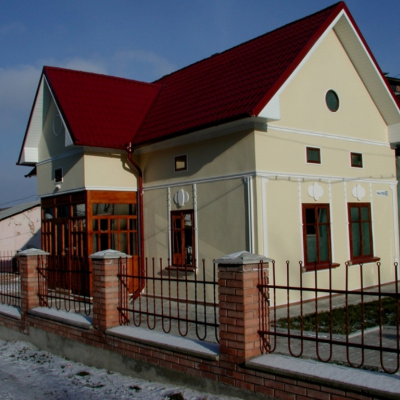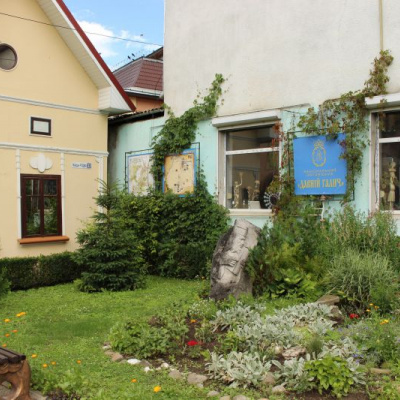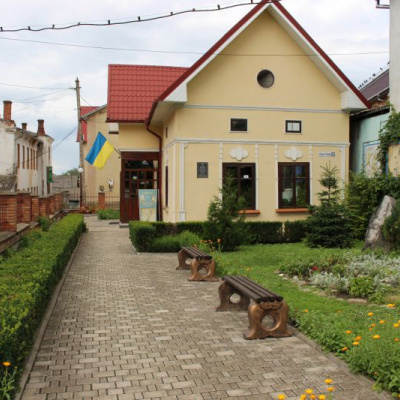Museum of Karaite History and Culture in Halych
The Museum of Karaite Culture is located in the center of Halych, in a cozy building on Christmas Square. The Karaites are a small ethnic group whose representatives settled on the territory of modern Ukraine long ago and managed to carry their own religious and cultural traditions through the centuries. The Museum of Karaite History and Culture has existed for quite some time. The Karaites identify themselves with the population of Turkic origin of the Khazar Khaganate and profess Karaism as a separate branch of Judaism that emerged in the eighth century. There are only 2000 Karaites left in the world. In Ukraine, there are only two Karaite communities left - one in Crimea and the other in Galicia. The Karaite language belongs to the Turkic group. There are several dialects: northern (Trakai), southern (Galician), and Crimean. The Karaites, along with the Krymchaks and Crimean Tatars, are recognized as an autochthonous people of Crimea.
The Museum of Karaite History and Culture was opened in November 2004. It is a branch of the Ancient Halych National Reserve. The museum's exposition introduces visitors to the religious and cultural traditions of the Karaites, as well as the social and everyday life of the Karaite community of Halych.
The Karaites have lived in Halych since the middle of the 13th century. According to one version, they arrived in Halych by agreement between King Danylo Halytskyi and Batu Khan in 1246. The main occupation of the Karaites, like many representatives of Judaism, is trade. That is why the first 100 settlers settled along the right bank of the Dniester, closer to the wharf, where ships with goods arrived. Karaite Street was laid out here, with its rows of shops and craftsmen.
Repression, emigration, and the remote location of minorities led to the extinction of ethnic Karaites. According to unofficial data, there are about 800 of them left in the Crimea, and in Halych there are two octogenarian grandmothers - that's all the representatives of the once numerous people. In Halych, as a memorial, there is a Karaite street, a cemetery with almost 50 monuments, and the Museum of Karaite History, which contains religious items and photographs that highlight the social life of the Karaite community.
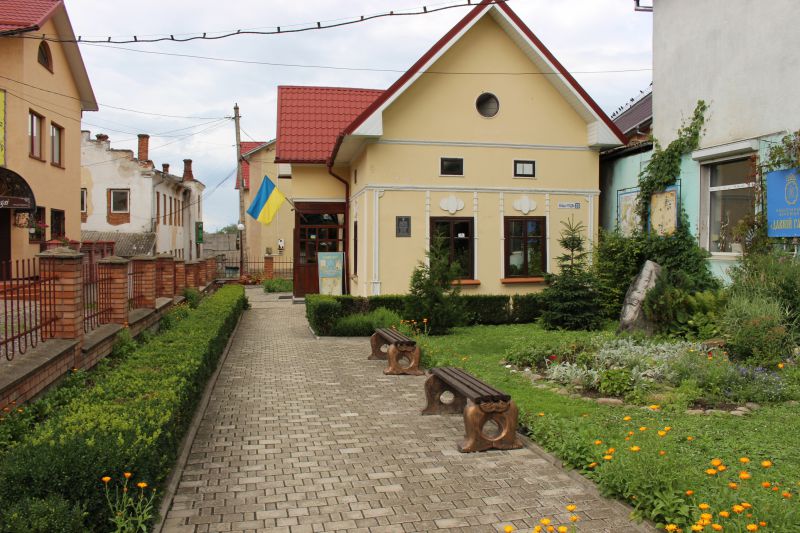
The idea to create such an institution arose much earlier, in the late 90s of the last century. At that time, the Karaite community of Halych numbered 8 people. As time inexorably took away the last representatives of the ethnic group one by one, there was a threat of the disappearance of a whole layer of culture of the inhabitants of this corner of Galicia.
At first, we began to study how many cultural values of this people have survived to the present day. Next, we bought a Karaite house in the center of Halych, on the Nativity Square, for the future museum. Then we developed a concept and sketches for the restoration of the historic building, and analyzed how best to use the space for the museum exhibition. Repair and restoration work was carried out.
All the while, we were searching for and acquiring future exhibits. Members of the Karaite community, primarily its then leader, Yanina Yeshvovych, took an active part in this work. She herself donated a large part of the items to the museum for free:
- A parchment Torah scroll from the late 18th century;
- handwritten prayer books;
- interior details of a Galician kenesa (Karaite temple);
- periodicals of Karaite communities;
- archival materials.
In the Middle Ages, the Talmud became the main law of Orthodox (Rabbinic) Judaism, the basis of Jewish education, and was considered the "oral Torah," a book with authority almost equal to the "written Torah," or Pentateuch. The protest against the dominance of the rabbinate and the Talmud itself took the form of calls to return to the pure Old Testament teachings. In addition to rejecting the Talmud, Anan's supporters followed the principle of literal interpretation of the Holy Scriptures proclaimed by their teacher, and also differed from the rest of the Jews ("Talmudists" or, otherwise, "Rabbinites") in a number of religious practices and traditions.
Today, the Karaite Foundation's collection includes about three thousand exhibits. Some of them are kept in storage. The opening of the exhibition was timed to coincide with the tenth anniversary of the creation of the Ancient Halych National Reserve.
The Hall of Karaite Religious Cult introduces the origins, development, and spread of Karaism and the emergence of the Karaite community in Halych. The Hall of Life focuses on things that are directly related to rituals and partially illustrate preparations for the celebration of Easter. The Hall of History is represented by documentary and photographic materials.
In the first hall of the museum, you can see religious and ceremonial items of the Karaite community of Halych, religious books, and the inventory of the Karaite temple. Special items in the collection include the robe and prayer scarf of a hazan (Karaite priest), his seal, and the Kenasa stamp. A memorial book from the kenesa, where guests of the Karaite community recorded their impressions, has been preserved. Among the exhibits:
- Torah scrolls in special covers;
- yad - a pointer for reading the Scriptures;
- a parochet, a curtain over the hechal altar;
- festive silvered special dishes;
- scissors for cutting candle wicks;
- mezuzah - a prayer amulet that was hung at the entrance to a home;
- menorahs that decorated the Galician kenasa;
- books of religious content (one of them was printed in Venice in 1528);
- Karaite calendars.
The second hall is dedicated to the life and activities of the Karaite community of Halych in the 20th century. Here you can see items and documents that attest to the professional employment of community members, as well as birth, marriage, and other personal documents. Also on display are Karaite periodicals from the first half of the 20th century and items directly related to Karaite rituals.
Where did the Karaites come from in Halych?
Karaite tradition connects this arrival with the reign of Danylo Romanovych. The museum will tell you in detail about the circumstances under which this could have happened. And they will certainly remind you of other details of their history, in which the King of the Commonwealth, Stefan Batory, appears. A very fascinating and dramatic story about a people who are now on the verge of extinction.
Interesting facts
- The religious doctrine of the Karaites rejected the Talmud, and they themselves differed from other adherents of Judaism in a number of religious practices and traditions.
- The term "Karaite" originated in the 9th century and reflects the main characteristic of the religious movement: the veneration (literally, "reading") of the Holy Scriptures as the only and direct source of religious truth.
- The Karaites count their years from the creation of the world. This countdown begins 3760 years before the birth of Christ. Their year lasts 354 days, 8 hours, and 48 minutes.
- The main holidays celebrated by the Karaites are the New (young) Moon, Easter, Pentecost, Feast of Tabernacles, New Year's Day, Forgiveness Day, and the Feast of Esther.
- According to the ancient calendar system, a day lasts from sunrise to sunset, so each holiday begins and ends in the evening.
- One of the most important holidays is Easter. It lasts for 7 days. On the eve of Easter, Karaites bake unleavened dough and do not add salt to it. They eat it instead of bread for a week.
- During the Easter holidays, the ethnic group uses a separate set of dishes. Easter cakes - timbils - are decorated with images of fish, stars, and flowers.
- During the Austro-Hungarian Empire, the Karaites were equalized in rights with Christians. They traded in cattle, wax, salt, and farmed. Until the 70s of the 19th century, they were not recruited for military service, and later they served exclusively in sanitary units.
Getting there
The Museum of Karaite History and Culture in Halych can be reached from Ivano-Frankivsk by bus or train. The institution is located on Halych's central square, Nativity Square.
Opening hours: from 9:00 to 18:00 (on weekends in summer from 10:30 to 19:30).
Accommodation around Museum of Karaite History and Culture in Halych:
Які маршрути проходять повз Museum of Karaite History and Culture in Halych?
Пропонуємо пройти такі туристичні (пішохідні) маршрути через/біля Museum of Karaite History and Culture in Halych: с. Пасічна, через с. Манява, Манявський вдсп., г. Велика Сивуля до с. Бистриця, с. Манява - пол. Монастирецька, с. Манява - вдсп. Манявський, с. Гута - с. Пасічна, с. Дора, через г. Синячка, пер. Пересліп, пол. Туршугувата, хр. Явірник до м. Яремче, с. Дора, через г. Синячка, хр. Чорногориця до м. Яремче
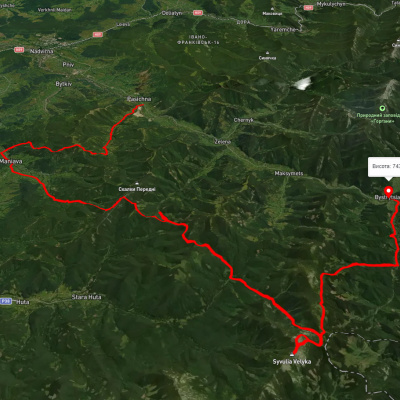
с. Пасічна, через с. Манява, Манявський вдсп., г. Велика Сивуля до с. Бистриця
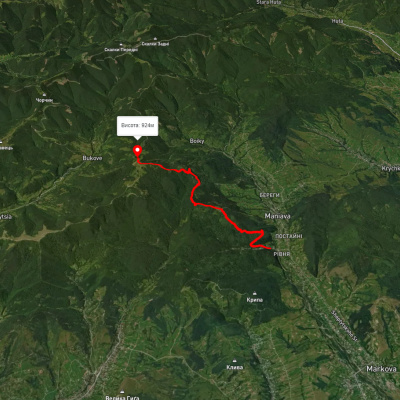
с. Манява - пол. Монастирецька
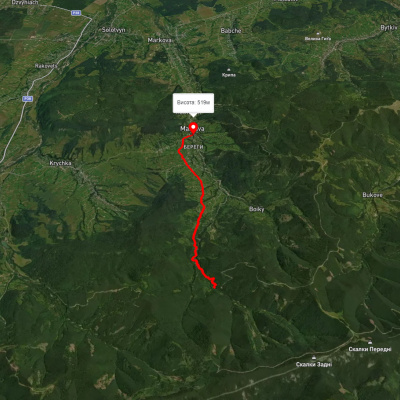
с. Манява - вдсп. Манявський
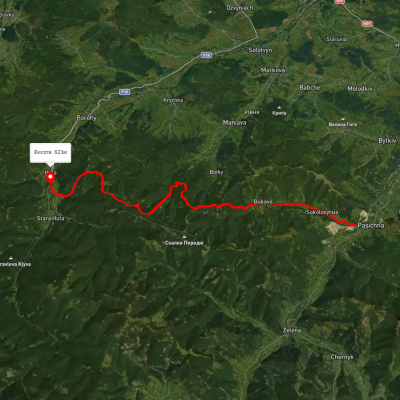
с. Гута - с. Пасічна
